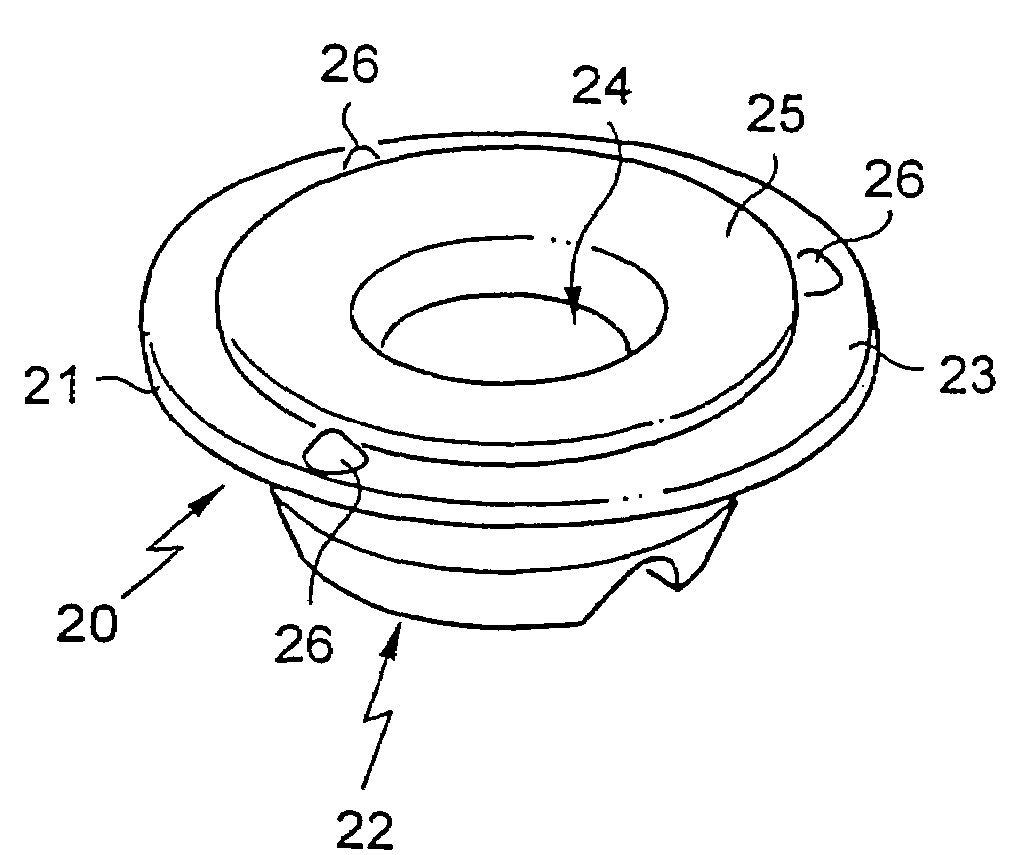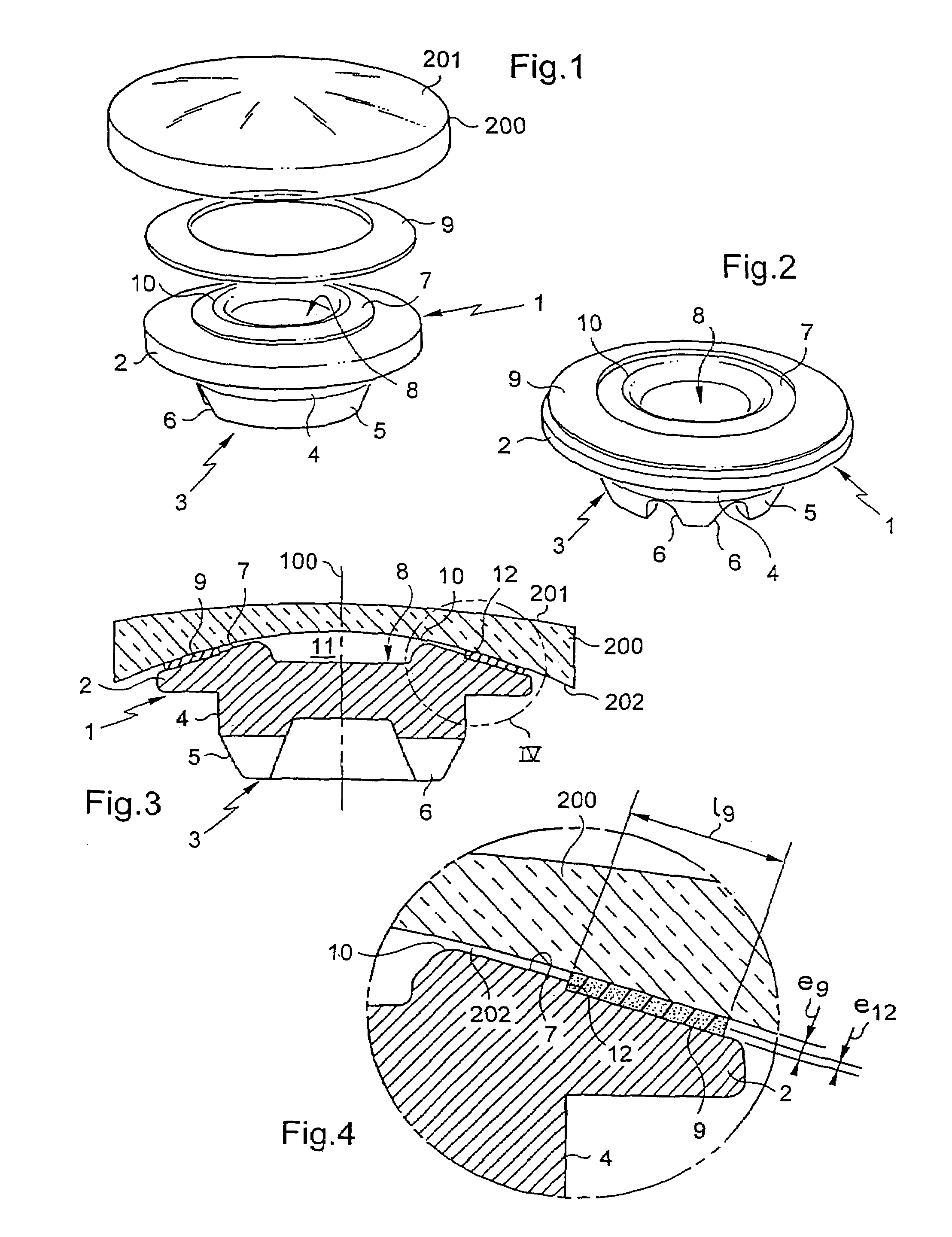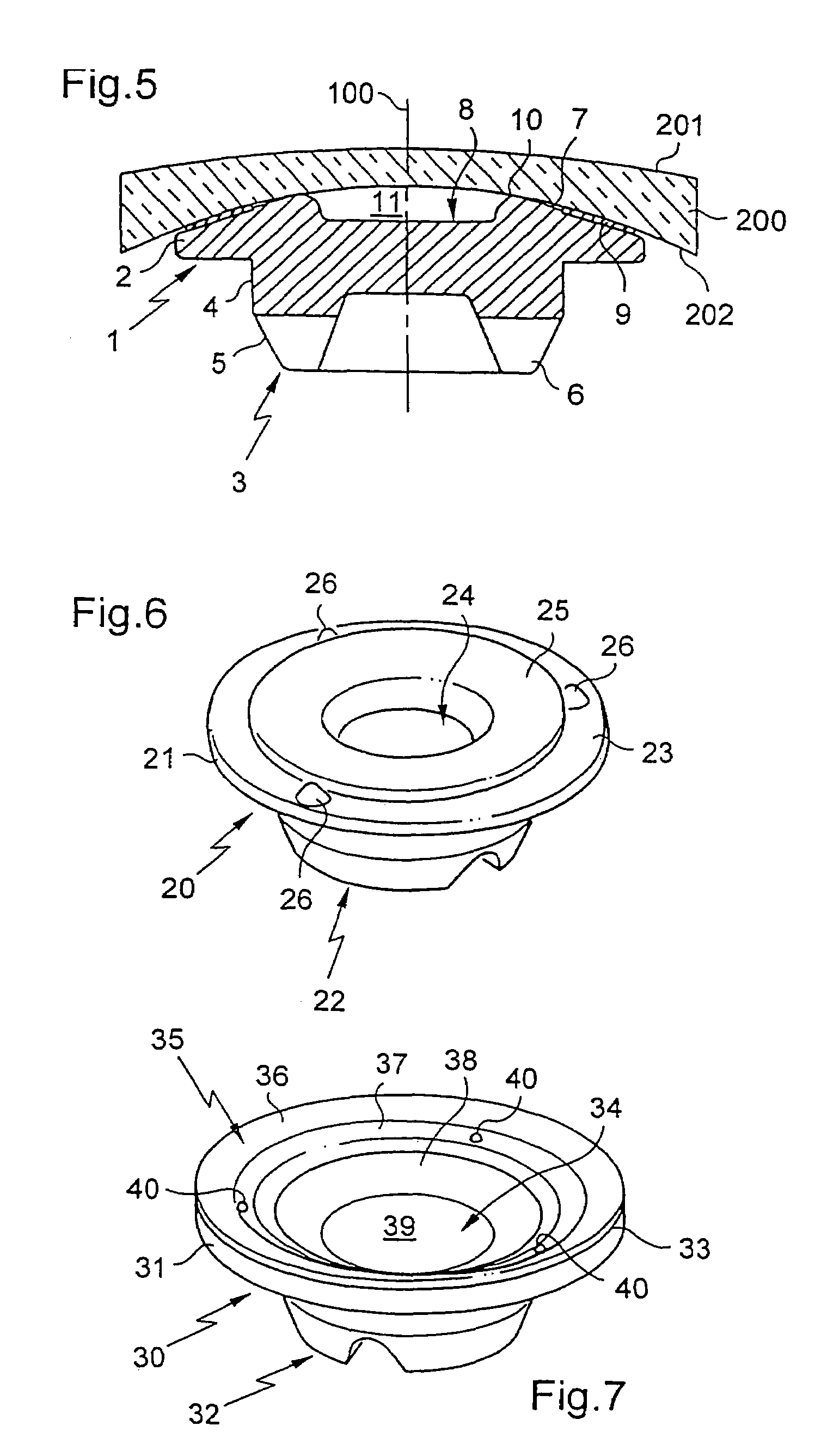Pneumatic blocking support for an optical lens
a technology of optical lenses and support beams, which is applied in the field of manufacturing optical lenses, can solve the problems of significant degradation of the optical affecting the precision of geometrical positioning, and affecting the quality of the finished lens, so as to ensure the stability and precision of geometrical positioning, and large contact area. , the effect of high torque transmission
- Summary
- Abstract
- Description
- Claims
- Application Information
AI Technical Summary
Benefits of technology
Problems solved by technology
Method used
Image
Examples
first embodiment
[0022]FIG. 1 is an overall exploded perspective view of a pneumatic blocking support in the invention;
[0023]FIG. 2 is a perspective view of the FIG. 1 support when assembled;
[0024]FIG. 3 is an axial section view of the support of FIGS. 1 and 2, on which there rests a lens prior to being blocked by means of suction;
[0025]FIG. 4 is a detail view showing zone IV of FIG. 3;
[0026]FIG. 5 is a view analogous to FIG. 3, after the lens has been blocked by suction;
second embodiment
[0027]FIG. 6 is a perspective view of a pneumatic blocking support in the invention; and
third embodiment
[0028]FIG. 7 is a perspective view of a pneumatic blocking support in the invention.
[0029]With reference to FIGS. 1 to 5, there is described a first embodiment of a support capable of using pneumatic action to block an optical lens 200, specifically an ophthalmological lens for spectacles, on a machine tool or a measurement device (not shown).
[0030]The support comprises a block 1 that is generally of circular symmetry about a central axis 100. The block 1 comprises two main portions: a plate 2 for receiving the lens 200 that is to be blocked, and projecting from the plate, coupling means 3 for securing the support to the nose of a machine tool or a measurement device.
[0031]The coupling means 3 are of conventional type and are themselves well known to the person skilled in the art; there is therefore no need to describe their structure or their operation in detail herein. It suffices to mention that, as shown in the figures, these means are in the form of a sleeve on an axis 100, the...
PUM
| Property | Measurement | Unit |
|---|---|---|
| length of time | aaaaa | aaaaa |
| diameter | aaaaa | aaaaa |
| diameter | aaaaa | aaaaa |
Abstract
Description
Claims
Application Information
 Login to View More
Login to View More - R&D
- Intellectual Property
- Life Sciences
- Materials
- Tech Scout
- Unparalleled Data Quality
- Higher Quality Content
- 60% Fewer Hallucinations
Browse by: Latest US Patents, China's latest patents, Technical Efficacy Thesaurus, Application Domain, Technology Topic, Popular Technical Reports.
© 2025 PatSnap. All rights reserved.Legal|Privacy policy|Modern Slavery Act Transparency Statement|Sitemap|About US| Contact US: help@patsnap.com



